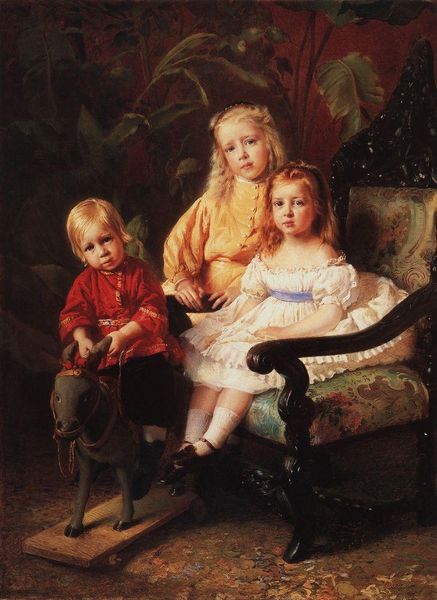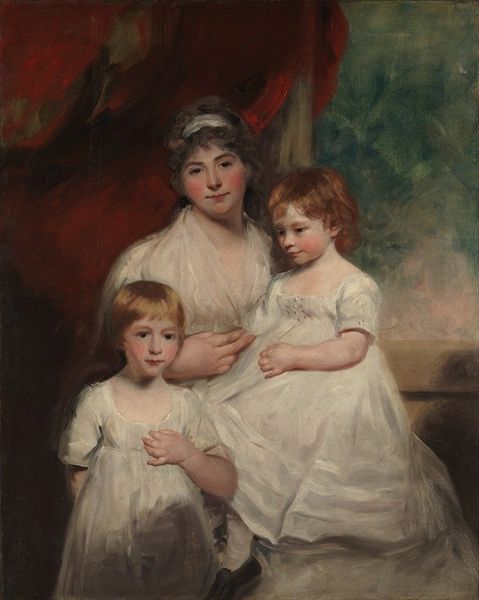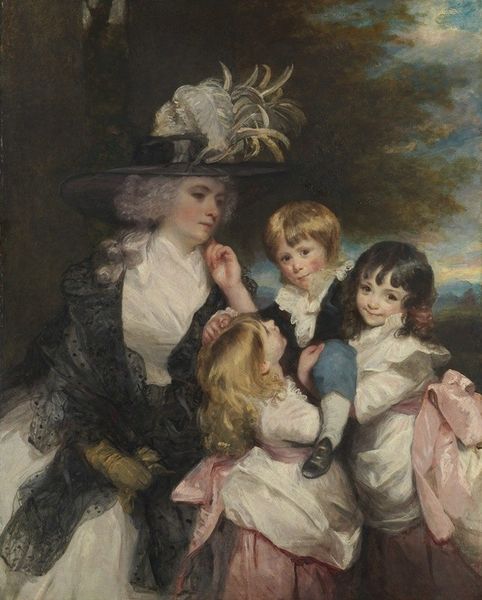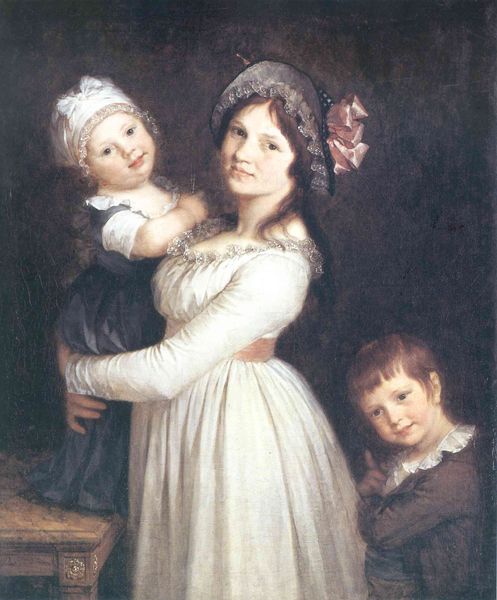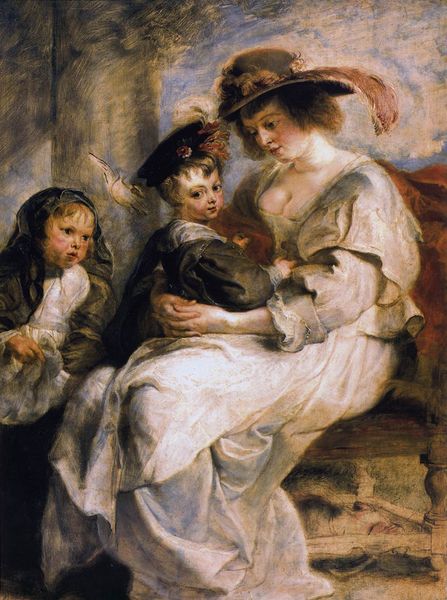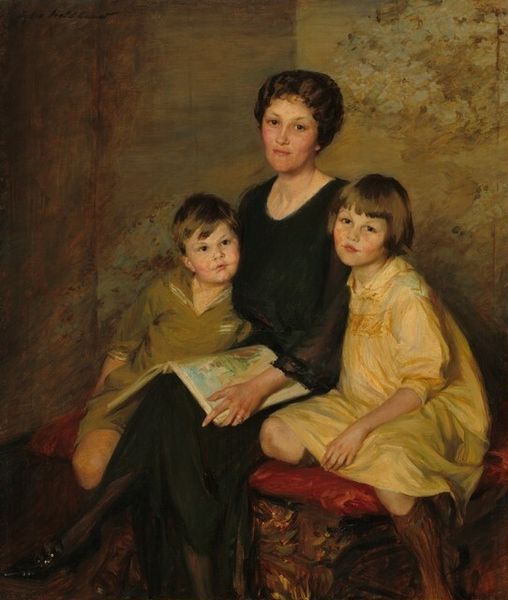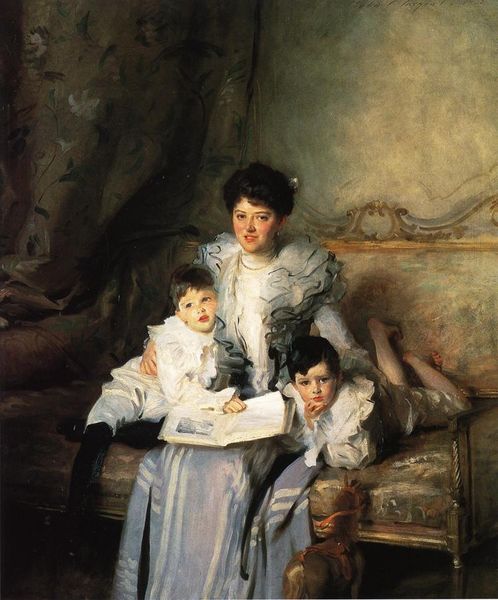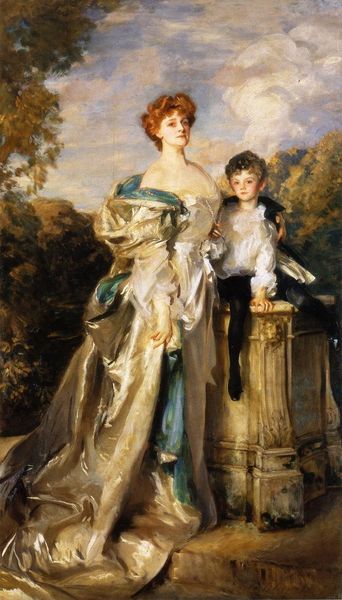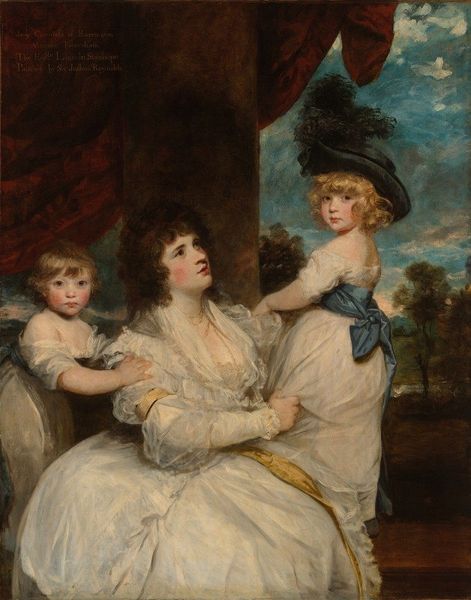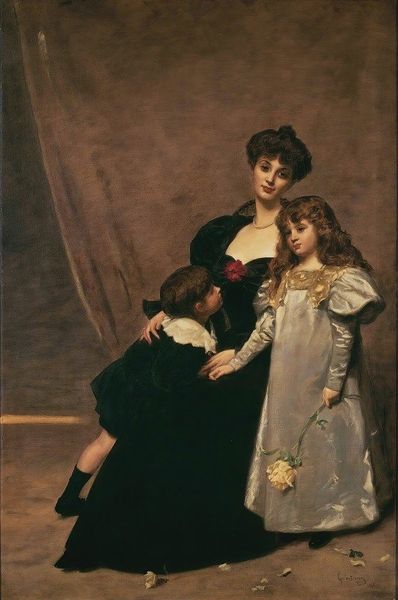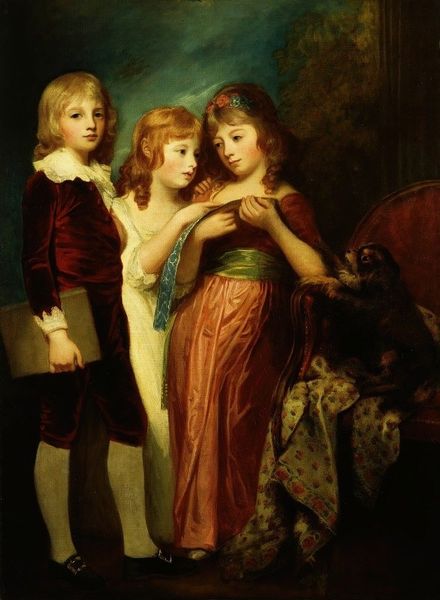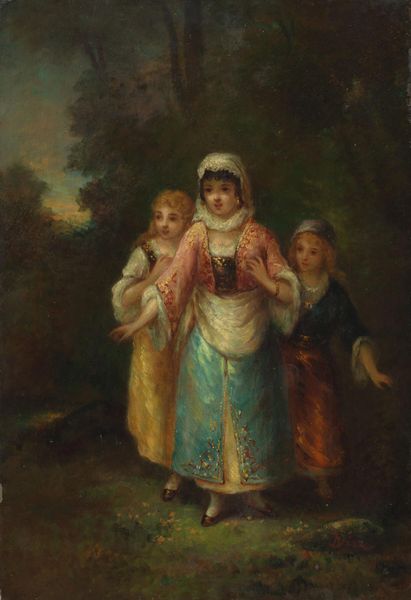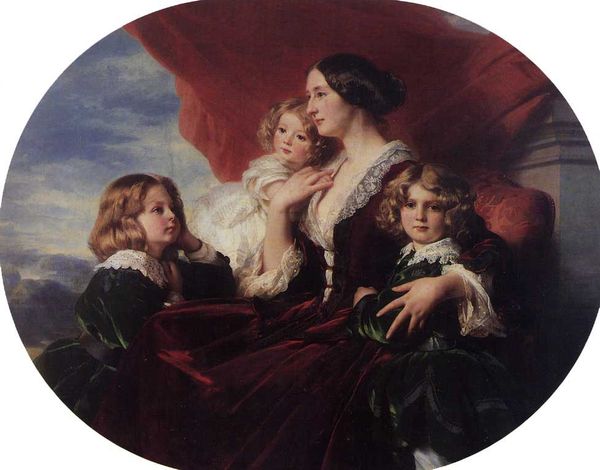
#
portrait
#
acrylic
#
fantasy art
#
green tone
#
possibly oil pastel
#
oil painting
#
neo expressionist
#
underpainting
#
painting painterly
#
abstract character
#
lady
#
female-portraits
#
expressionist
Copyright: Public domain
Editor: We're looking at "Portrait" by Konstantin Egorovich Makovsky. It's very opulent, a woman in a lace dress with two children. The detailing is so fine, it's really striking. What do you notice about it? Curator: The painting reflects a very particular socio-political context of the Russian elite in the late 19th century. Makovsky was a master of portraying wealth and status. Consider how the elaborate costumes and setting serve not only as visual details, but as statements of social positioning. Who do you think this painting was intended for, and how might its intended audience affect its presentation? Editor: It definitely screams "wealth," maybe meant for family or close friends? So showing off status was less of a concern. Curator: Perhaps. But portraits of this scale also often had a public dimension, particularly for families seeking to cement their position in society. How does the artist use light and shadow to direct our attention? What does it emphasize? Editor: The light definitely focuses on the woman's face and the children’s pale skin. That intense focus seems to separate them from everything else. Curator: Exactly. The use of light is strategic. What could that deliberate contrast between light and shadow imply about the perceived roles or burdens placed on women and children of that era? Editor: Maybe highlighting their fragility, dependence, or supposed innocence compared to the ‘darker’ world outside? Curator: Precisely. It makes you think about how power and privilege are portrayed and reinforced through visual imagery. What assumptions do you make about them based on their appearances, and are they challenged at all? Editor: I see your point! I came in thinking, "Oh, a pretty picture," but it's so much more layered and critical of the social structures of the time. Curator: Indeed, art provides a fascinating window into history if we look beyond just the aesthetic.
Comments
No comments
Be the first to comment and join the conversation on the ultimate creative platform.

